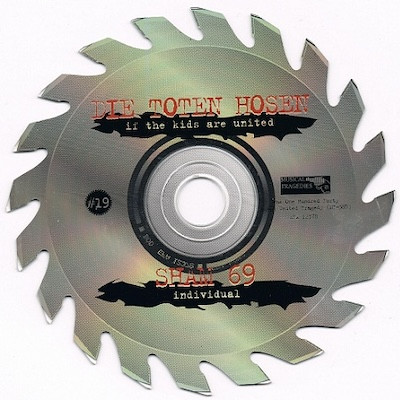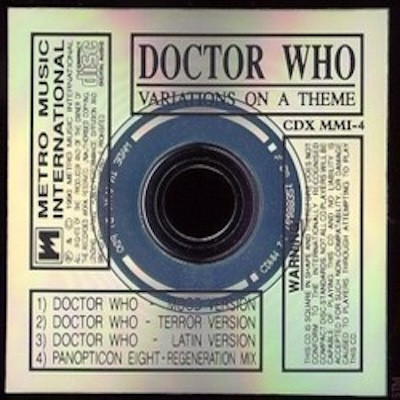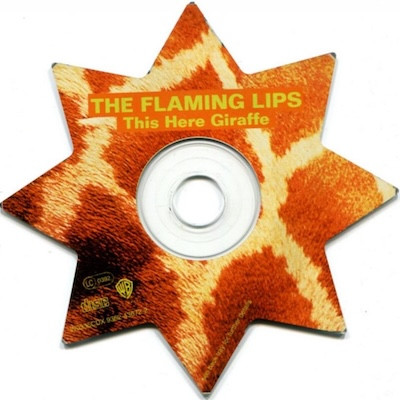Before we talk about everyone’s favourite Canadian aunt, let’s talk about ejecting CDs. On Macs.
It’s 2002, 20 years after the first compact disc player was introduced by Sony, one of the inventors of the format. In the meantime, it also became a more popular storage format for delivering software, where replacing a dozen or more floppy disks with one shining platter was considered a godsend.
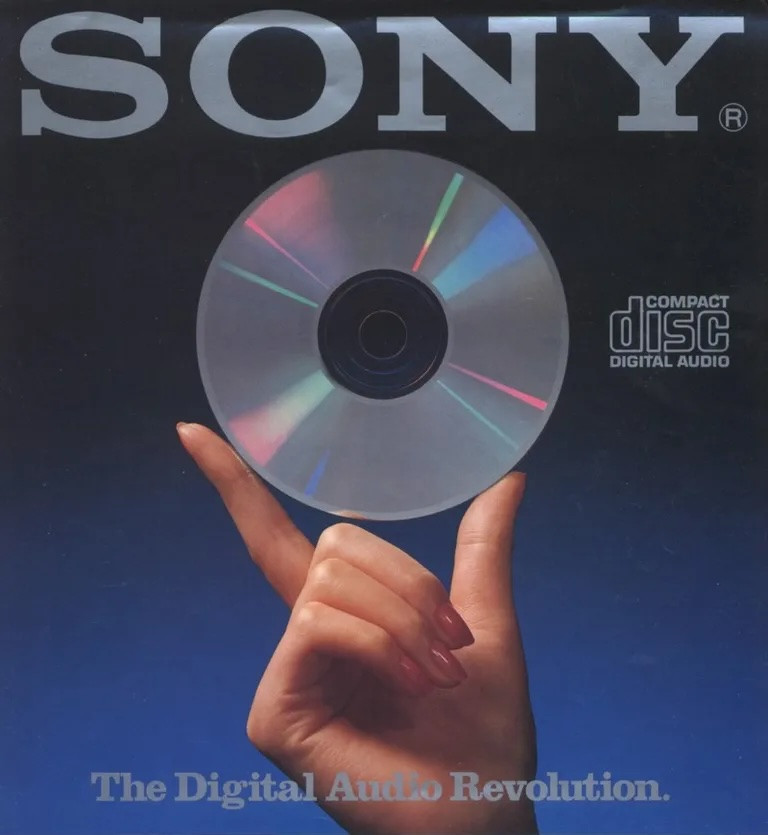
But it still was quite popular for delivering music. Although that started to wane: MP3 files on your computer got rather popular at that time, but there was no decent way to buy them online. So if you just wanted to store your music on your colorful iMac or transfer it to your brand new iPod, you “ripped” them from your CD collection. Or if that was too fancy, you just swapped CDs every time you wanted to play some new tunes.
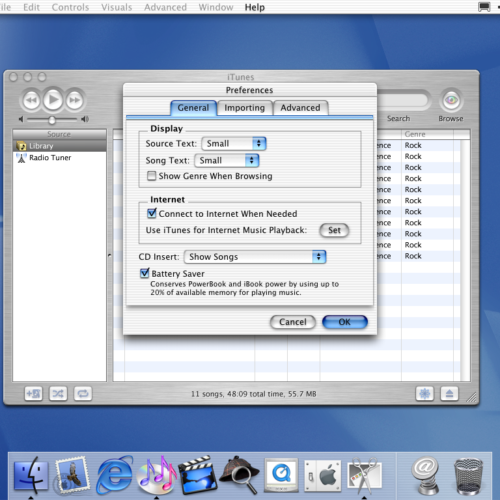
So you can imagine that there was a lot of CD swapping going on a 2002 iMac. Dad got his camera film developed and got handed a burned CD with all the vacation photos. Mom is listening to Usher’s 8701 in iTunes, while working on some documents for her legal practice in an old copy of Word Perfect running in the Classic environment. Later the older sun pops in his Diablo II CD and plays a little, and late at night his younger sister is copying the new Eminem album for her school buddies.
Perfect Post-Y2K family bliss… Until the CD drive doesn’t give up the recently inserted disc. Mechanical drives can fail, the medium itself might be damaged. In the end, the eject icon in iTunes might not work. What now?
Many people familiar with CD-ROM drives would now point to the eject button on the drive itself. But remember, this is the year 2002, and we’ve got a slot-loading iMac.
There’s More Than One Way To Eject Things #
So your Mac doesn’t have any fancy physical buttons that help you here. But there wasn’t a similar drive to minimalism in the operating system features of that time (it took another two decades until everything got flat, boring and mobile-looking).
So the iTunes eject icon didn’t work, but (assuming AppleCareHotlineVoice) did you try one of the following (any of which might work when others don’t, by the way)?
-
Drag the huge CD icon on your desktop to the trash. As soon as you start dragging, the trash turns into an eject button. (No way to know that before hand, so I guess someone actually read a manual)
-
Right-click on the huge CD icon and select “eject”. (What’s a “right-click”, my hockey puck mouse only has one button, you say? Well, hold the “Control” key and click on it)
-
Press ⌘-E
-
Reboot and while the system is starting, hold your mouse button down
-
Reboot and hold the Option/Alt key pressed. Then you’ll get a boot selection menu, and the CD part of that should have an eject icon.
-
Reboot and hold the “T” key pressed. You’ll enter “Target Disk Mode”, which sounds like something out of Knight Rider, but usually allows your Mac to assume the role of a hard drive. There you’ll find an eject icon similar to the boot selection screen.
-
Reboot and – stay with me – hold down the following four keys: ⌘ (Command), Option/Alt, O and F. If you can do a Vulcan salute, you should manage that. Now you’ll see a white screen with a bit of text. No icons, no mouse pointer. This is the* Open Firmware* that was the equivalent of a PC’s BIOS on the Apple computers of this generation (Nerd Alert: and it’s a Forth!). Now enter* “eject-cd”, press return, and then “mac-boot”* to get back to your pinstriped OS X desktop.
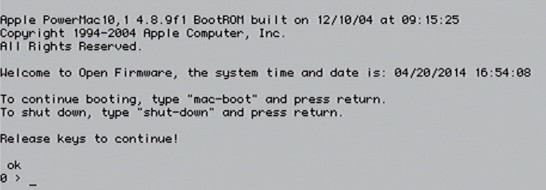
Most of the time, you’ve got your CD back right now, after some worrying clicking and whining noises from the drive.
And if you really need to get* physical*, there’s actually another way
with this specific computer. Note that apart from the regular eject
button, most PC CDROM drives also had small holes that allowed you to
insert a bent paper clip to force the ejection lever to operate. The
slot on an iMac actually had one of those, but I leave finding that and
bad jokes about this as an exercise for the reader…
(And note that that e.g. the Mac G4 Cube didn’t have this pinhole)
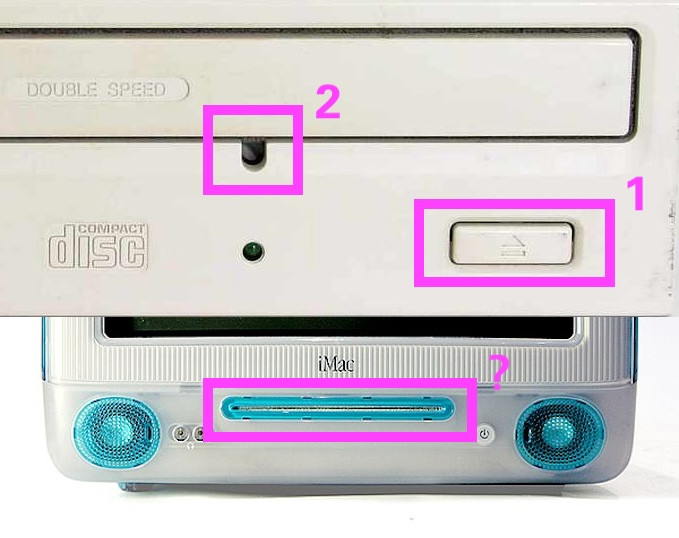
The Last Day of your Mac Has Come #
What’s another likely reason for this to have happened in the first place, beyond shoddy drives and bent CDs? Because you, like millions of other people, just bought the new album by Quebec’s own Céline Marie Claudette Dion “A New Day Has Come” (for puns galore!). And you’re probably European.

You also didn’t read the sticker that says “This CD will not play in PC/MAC”. And while taste can’t be accounted for, and neither the place where you were born and are active commercially, that’s definitely your fault and you’ll have to suffer way more consequences than you would have thought.
As I wrote above, this was in the halcyon days of your very own MP3 collection. Some of which were gathered with dubious file-sharing means, some of which were perfectly fine as they came from the CDs you paid for.
But the music companies didn’t see it that way. Shortly after that, Steve Jobs, backed by the success of the new iPods, managed to convince a few of the bigger music labels to publish songs on his new iTunes Store platform, which paved the way for other stores and ultimately streaming services.
In the early years of the century, the fight was still on. And one weapon in this was the copy protection mechanism Key2Audio.
It wasn’t uncommon for audio CDs to have additional data tracks, probably for a music video for one of the songs. Key2Audio basically pretended it had two audio tracks, but those were written to the disc in such a way to confuse the systems. Regular CD players just ignored data tracks, so you never ran into problems there. But if you want to listen to Have You Ever Been in Love on your PC or Mac, you were in for a treat. Ranging from everything working fine to the system becoming unresponsive and the CD being stuck in there.
Some Macs belonged to the latter category, and in the extreme cases that meant you had to bring your fancy gadget in for a repair. And why Celine crooned Sorry For Love on the album, she didn’t offer an apology or cover the repair costs for this. It truly is the hardest word.
Addendum: Other ways to mess up your drive #
Of course Ms. Dion wasn’t the only artist where the label was using that copy protection. Allegedly, one CD by Natalie Imbruglia didn’t even contain a warning label. No reports on whether she was torn by the laments of disappointed listeners.
But apart from that particular Neighbours-actor-turned-singer, there was another fad that could wreak shrieking havoc on your slot-loading disc drives: Shaped CDs. When not placed in a tray, they often didn’t center enough. Asymmetric ones were the worst.
